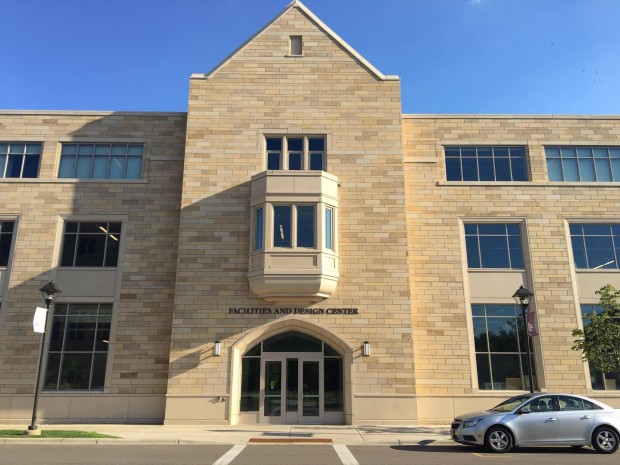
The St. Thomas engineering department is breaking ground this August on a campus microgrid, intended to teach, research and test alternative energy sources.
A microgrid is a group of interconnected energy sources working to power a system. This particular microgrid consists of multiple generating units that contribute to the power of the system and includes biodiesel, solar and wind energy.
The project is being funded by the Xcel Energy Renewable Development Fund, who awarded St. Thomas with a $2.1 million grant. The program is state-mandated and funded by Xcel customers.
The system will be located on South Campus, with a majority housed in the Facilities and Designs building. They will also be placing 200 solar panels over McCarthy Gym and generators powered by biodiesel in the Anderson Parking Facility, as well as developing a device that will mimic a wind turbine to create energy.
The microgrid is a three-year long project, but it should be partially operational within the year, according to Don Weinkauf, dean of the School of Engineering. There are also plans for it to be integrated into the curriculum for engineering students.
“It will be a key aspect of both research and education for our electrical engineering students,” Weinkauf said. “As it moves along, it should have key effects on the overall curriculum and give these students excellent opportunities for learning and growth.”
Rosendy Desir, a sophomore engineering student, feels the microgrid will have a positive impact for both the faculty and students.
“The microgrid will help open doors to new opportunities for both the students and faculty to collaborate with each other,” Desir said. “I think it will help promote a more sustainable campus and world.”
The microgrid is also intended for use on a larger scale in the community.
“It is designed with the purpose of providing a research platform for universities and companies across Minnesota to collaborate with the University of St. Thomas,” Weinkauf said.
This collaboration will allow various companies to use the microgrid for testing their own devices and alternative energy sources.
This project is a part of a nationwide initiative among Catholic colleges to work toward the goals set out in Pope Francis’ Laudato Si’, which addresses the impact that humans are making on the environment.
This project also ties into the university’s long-term goal of being completely carbon neutral by 2035. Jenna Abrahamson, a sophomore environmental sustainability student at St. Thomas, is particularly excited about what this microgrid means for the future of the school.
“I’m excited that St. Thomas is taking action when it comes to sustainable energy use and I’m happy that they’re keeping up with their plan to go carbon neutral,” Abrahamson said. “Taking steps like these is so important for our future.”
Mary Brickner can be reached at bric0029@stthomas.edu

